-
Executive Summary
-
Scope of
-
the Report
-
Market Definition
-
Scope of the Study
-
List of Assumptions
-
Markets Structure
-
Market Research Methodology
-
Research Process
-
Primary Research
-
Secondary Research
-
Market Size Estimation
-
Forecast Model
-
Market Dynamics of Global E-Fluids Market
-
Introduction
-
Drivers
-
Restraints
-
Opportunities
-
Challenges
-
Market Factor Analysis
-
Supply
- Distributors/Retailers
- End-Use Industries
-
Chain Analysis
-
Raw Form Suppliers
-
Manufacturers of E-Fluids
-
Porter''s Five Forces Model
- Threat of New Entrants
- Intensity
- Bargaining Power of Buyers
-
of Rivalry
-
Threat of Substitutes
-
Bargaining Power of Suppliers
-
Pricing Analysis (USD/Ton), 2019-2021
-
Impact of Covid-19
- Impact of Covid-19 on E-Fluids End users
-
on E-Fluids Market
-
Impact of Covid-19 on Supply Chain of E-Fluids
-
Global E-Fluids Market,
-
by Product Type
-
Introduction
-
Coolants
-
Market Estimates & Forecast, by Region, 2019–2030
-
Brake Fluid
- Market Estimates & Forecast, by Region,
-
Transmission Fluids
-
Market Estimates & Forecast, by Region, 2019–2030
-
Greases
- Market Estimates & Forecast, by Region,
-
Global E-Fluids Market, by Vehicle Type
-
Introduction
-
On-highway Vehicle
- Market Estimates & Forecast, by Region,
-
Off-highway Vehicle
-
Market Estimates & Forecast, by Region, 2019–2030
-
Global E-Fluids Market, by Propulsion
-
Introduction
-
Hybrid EV
- Market Estimates
-
& Forecast, by Region, 2019–2030
-
Battery EV
- Market Estimates & Forecast, by Region,
-
Global E-Fluids Market, by Fill Type
-
Introduction
-
First Fill
- Market Estimates & Forecast, by Region, 2019–2030
-
Service Fill
- Market Estimates
-
& Forecast, by Region, 2019–2030
-
Global E-Fluids Market, by Region
-
Introduction
-
North America
-
& Forecast by Country, 2019–2030
-
Type, 2019–2030
-
Market Estimates
-
Market Estimates & Forecast, by Product
-
Market Estimates & Forecast, by Vehicle Type, 2019–2030
-
Forecast, by Propulsion, 2019–2030
-
US
-
Market Estimates &
-
Market Estimates & Forecast, by Fill Type,
-
Market Estimates & Forecast, by Product Type, 2019–2030
-
Forecast, by Vehicle Type, 2019–2030
-
Market Estimates &
-
Market Estimates & Forecast, by Propulsion,
-
Market Estimates & Forecast, by Fill Type, 2019–2030
-
Forecast, by Product Type, 2019–2030
-
Type, 2019–2030
-
Canada
-
Market Estimates &
-
Market Estimates & Forecast, by Vehicle
-
Market Estimates & Forecast, by Propulsion, 2019–2030
-
Forecast, by Fill Type, 2019–2030
-
& Forecast, by Product Type, 2019–2030
-
Type, 2019–2030
-
Market Estimates &
-
Europe
-
Market Estimates & Forecast by Country, 2019–2030
-
Market Estimates
-
Market Estimates & Forecast, by Vehicle
-
Market Estimates & Forecast, by Propulsion, 2019–2030
-
Forecast, by Fill Type, 2019–2030
-
Market Estimates &
-
Germany
-
Market Estimates & Forecast, by Product Type,
-
Market Estimates & Forecast, by Vehicle Type, 2019–2030
-
Forecast, by Propulsion, 2019–2030
-
France
-
Market Estimates &
-
Market Estimates & Forecast, by Fill Type,
-
Market Estimates & Forecast, by Product Type, 2019–2030
-
Forecast, by Vehicle Type, 2019–2030
-
Market Estimates &
-
Market Estimates & Forecast, by Propulsion,
-
Market Estimates & Forecast, by Fill Type, 2019–2030
-
Forecast, by Product Type, 2019–2030
-
Type, 2019–2030
-
Italy
-
Market Estimates &
-
Market Estimates & Forecast, by Vehicle
-
Market Estimates & Forecast, by Propulsion, 2019–2030
-
Forecast, by Fill Type, 2019–2030
-
Market Estimates &
-
Spain
-
Market Estimates & Forecast, by Product Type,
-
Market Estimates & Forecast, by Vehicle Type, 2019–2030
-
Forecast, by Propulsion, 2019–2030
-
UK
-
Market Estimates &
-
Market Estimates & Forecast, by Fill Type,
-
Market Estimates & Forecast, by Product Type, 2019–2030
-
Forecast, by Vehicle Type, 2019–2030
-
Market Estimates &
-
Market Estimates & Forecast, by Propulsion,
-
Market Estimates & Forecast, by Fill Type, 2019–2030
-
Forecast, by Product Type, 2019–2030
-
Type, 2019–2030
-
Russia
-
Market Estimates &
-
Market Estimates & Forecast, by Vehicle
-
Market Estimates & Forecast, by Propulsion, 2019–2030
-
Forecast, by Fill Type, 2019–2030
-
Type, 2019–2030
-
Market Estimates &
-
Rest of Europe
-
Market Estimates & Forecast, by Product
-
Market Estimates & Forecast, by Vehicle Type, 2019–2030
-
Forecast, by Propulsion, 2019–2030
-
Asia-Pacific
-
Market Estimates & Forecast by Country, 2019–2030
-
Type, 2019–2030
-
Market Estimates &
-
Market Estimates & Forecast, by Fill Type,
-
Market Estimates & Forecast, by Product
-
Market Estimates & Forecast, by Vehicle Type, 2019–2030
-
Forecast, by Propulsion, 2019–2030
-
China
-
Market Estimates &
-
Market Estimates & Forecast, by Fill Type,
-
Market Estimates & Forecast, by Product Type, 2019–2030
-
Forecast, by Vehicle Type, 2019–2030
-
Market Estimates &
-
Market Estimates & Forecast, by Propulsion,
-
Market Estimates & Forecast, by Fill Type, 2019–2030
-
Forecast, by Product Type, 2019–2030
-
Type, 2019–2030
-
India
-
Market Estimates &
-
Market Estimates & Forecast, by Vehicle
-
Market Estimates & Forecast, by Propulsion, 2019–2030
-
Forecast, by Fill Type, 2019–2030
-
Type, 2019–2030
-
Market Estimates &
-
South Korea
-
Market Estimates & Forecast, by Product
-
Market Estimates & Forecast, by Vehicle Type, 2019–2030
-
Forecast, by Propulsion, 2019–2030
-
Australia & New Zealand
-
& Forecast, by Vehicle Type, 2019–2030
-
Market Estimates &
-
Market Estimates & Forecast, by Fill Type,
-
Market Estimates & Forecast, by Product Type, 2019–2030
-
Market Estimates
-
Market Estimates & Forecast, by Propulsion,
-
Market Estimates & Forecast, by Fill Type, 2019–2030
-
& Forecast, by Product Type, 2019–2030
-
Type, 2019–2030
-
Australia & New Zealand
-
Market Estimates
-
Market Estimates & Forecast, by Vehicle
-
Market Estimates & Forecast, by Propulsion, 2019–2030
-
Forecast, by Fill Type, 2019–2030
-
Type, 2019–2030
-
Market Estimates &
-
Rest of Asia-Pacific
-
Market Estimates & Forecast, by Product
-
Market Estimates & Forecast, by Vehicle Type, 2019–2030
-
Forecast, by Propulsion, 2019–2030
-
Middle East & Africa
-
& Forecast, by Product Type, 2019–2030
-
Type, 2019–2030
-
Market Estimates &
-
Market Estimates & Forecast, by Fill Type,
-
Market Estimates & Forecast, by Country, 2019–2030
-
Market Estimates
-
Market Estimates & Forecast, by Vehicle
-
Market Estimates & Forecast, by Propulsion, 2019–2030
-
Forecast, by Fill Type, 2019–2030
-
& Forecast, by Vehicle Type, 2019–2030
-
Market Estimates &
-
South Africa
-
Market Estimates & Forecast, by Product Type, 2019–2030
-
Market Estimates
-
Market Estimates & Forecast, by Propulsion,
-
Market Estimates & Forecast, by Fill Type, 2019–2030
-
Forecast, by Product Type, 2019–2030
-
Type, 2019–2030
-
GCC
-
Market Estimates &
-
Market Estimates & Forecast, by Vehicle
-
Market Estimates & Forecast, by Propulsion, 2019–2030
-
Forecast, by Fill Type, 2019–2030
-
Forecast, by Product Type, 2019–2030
-
Type, 2019–2030
-
Market Estimates &
-
Rest of the Middle East & Africa
-
Market Estimates &
-
Market Estimates & Forecast, by Vehicle
-
Market Estimates & Forecast, by Propulsion, 2019–2030
-
Forecast, by Fill Type, 2019–2030
-
Market Estimates &
-
Latin America
-
Market Estimates & Forecast, by Country,
-
Market Estimates & Forecast, by Product Type, 2019–2030
-
Forecast, by Vehicle Type, 2019–2030
-
Market Estimates &
-
Market Estimates & Forecast, by Propulsion,
-
Market Estimates & Forecast, by Fill Type, 2019–2030
-
Forecast, by Product Type, 2019–2030
-
Type, 2019–2030
-
Brazil
-
Market Estimates &
-
Market Estimates & Forecast, by Vehicle
-
Market Estimates & Forecast, by Propulsion, 2019–2030
-
Forecast, by Fill Type, 2019–2030
-
Type, 2019–2030
-
Market Estimates &
-
Argentina
-
Market Estimates & Forecast, by Product
-
Market Estimates & Forecast, by Vehicle Type, 2019–2030
-
Forecast, by Propulsion, 2019–2030
-
Mexico
-
Market Estimates &
-
Market Estimates & Forecast, by Fill Type,
-
Market Estimates & Forecast, by Product Type, 2019–2030
-
Forecast, by Vehicle Type, 2019–2030
-
Market Estimates &
-
Market Estimates & Forecast, by Propulsion,
-
Market Estimates & Forecast, by Fill Type, 2019–2030
-
Estimates & Forecast, by Product Type, 2019–2030
-
Type, 2019–2030
-
Rest of Latin America
-
Market
-
Market Estimates & Forecast, by Vehicle
-
Market Estimates & Forecast, by Propulsion, 2019–2030
-
Forecast, by Fill Type, 2019–2030
-
Market Estimates &
-
Competitive Landscape
-
Introduction
-
Market Key Strategies
-
Key Development Analysis (Expansions/Mergers
-
& Acquisitions/Joint Ventures/New E-Fluids Developments/Agreements/Investments)
-
Company
-
Profiles
-
Royal Dutch Shell Plc
-
Company Overview
-
Financial Overview
-
E-Fluids Offered
-
Key Developments
-
SWOT Analysis
-
Key Strategies
-
ExxonMobil Corporation
-
BP Plc.
-
TotalEnergies SE
-
FUCHS Petrolub AG
-
Repsol S.A.
-
ENEOS Corp.
-
Valvoline Inc.
-
PTT
-
Petronas
-
Appendix
-
-
LIST OF TABLES
-
Table 1.: Global E-Fluids
-
Market, by Region, 2019–2030
-
Table 2.: North America: E-Fluids Market, by Country, 2019–2030
-
Table 3.: Europe: E-Fluids
-
Market, by Country, 2019–2030
-
Table 4.: Asia-Pacific: E-Fluids Market, by Country, 2019–2030
-
Table 5.: Middle East
-
& Africa: E-Fluids Market, by Country, 2019–2030
-
Table 6.: Latin America: E-Fluids Market, by Country,
-
Table
-
7.: Global E-Fluids Market, by Product Type, 2019–2030
-
Table 8.: North America: E-Fluids Market, by Country,
-
Table
-
9.: Europe: E-Fluids Market, by Country, 2019–2030
-
Table 10.: Asia-Pacific: E-Fluids Market, by Country,
-
Table
-
11.: Middle East & Africa: E-Fluids Market, by Country, 2019–2030
-
Table 12.: Latin America:
-
E-Fluids Market, by Country, 2019–2030
-
Table 13.: Global E-Fluids Market, by Vehicle Type,
-
Table
-
14.: North America: E-Fluids Market, by Country, 2019–2030
-
Table 15.: Europe: E-Fluids Market,
-
by Country, 2019–2030
-
Table 16.: Asia-Pacific: E-Fluids Market, by Country, 2019–2030
-
Table 17.: Middle East
-
& Africa: E-Fluids Market, by Country, 2019–2030
-
Table 18.: Latin America: E-Fluids Market, by Country,
-
Table
-
19.: Global E-Fluids Market, by Propulsion, 2019–2030
-
Table 20.: North America: E-Fluids Market, by Country,
-
Table
-
21.: Europe: E-Fluids Market, by Country, 2019–2030
-
Table 22.: Asia-Pacific: E-Fluids Market, by Country,
-
Table
-
23.: Middle East & Africa: E-Fluids Market, by Country, 2019–2030
-
Table 24.: Latin America:
-
E-Fluids Market, by Country, 2019–2030
-
Table 25.: Global E-Fluids Market, by Fill Type,
-
Table
-
26.: North America: E-Fluids Market, by Country, 2019–2030
-
Table 27.: Europe: E-Fluids Market,
-
by Country, 2019–2030
-
Table 28.: Asia-Pacific: E-Fluids Market, by Country, 2019–2030
-
Table 29.: Middle East
-
& Africa: E-Fluids Market, by Country, 2019–2030
-
Table 30.: Latin America: E-Fluids Market, by Country,
-
Table
-
31.: North America: E-Fluids Market, by Country, 2019–2030
-
Table 32.: North America: E-Fluids
-
Market, by Product Type 2019–2030
-
Table 33.: North America: E-Fluids Market, by Vehicle Type,
-
Table
-
34.: North America: E-Fluids Market, by Propulsion, 2019–2030
-
Table 35.: North America: E-Fluids
-
Market, by Fill Type, 2019–2030
-
Table 36.: Euope: E-Fluids Market, by Country, 2019–2030
-
Table 37.: Euope: E-Fluids
-
Market, by Product Type 2019–2030
-
Table 38.: Euope: E-Fluids Market, by Vehicle Type, 2019–2030
-
Table 39.: Euope: E-Fluids
-
Market, by Propulsion, 2019–2030
-
Table 40.: Euope: E-Fluids Market, by Fill Type, 2019–2030
-
Table 41.: Asia Pacific:
-
E-Fluids Market, by Country, 2019–2030
-
Table 42.: Asia Pacific: E-Fluids Market, by Product
-
Type 2019–2030
-
Table
-
43.: Asia Pacific: E-Fluids Market, by Vehicle Type, 2019–2030
-
Table 44.: Asia Pacific: E-Fluids
-
Market, by Propulsion, 2019–2030
-
Table 45.: Asia Pacific: E-Fluids Market, by Fill Type,
-
Table
-
46.: Latin America: E-Fluids Market, by Country, 2019–2030
-
Table 47.: Latin America: E-Fluids
-
Market, by Product Type 2019–2030
-
Table 48.: Latin America: E-Fluids Market, by Vehicle Type,
-
Table
-
49.: Latin America: E-Fluids Market, by Propulsion, 2019–2030
-
Table 50.: Latin America: E-Fluids
-
Market, by Fill Type, 2019–2030
-
Table 51.: MEA: E-Fluids Market, by Country, 2019–2030
-
Table 52.: MEA: E-Fluids
-
Market, by Product Type 2019–2030
-
Table 53.: MEA: E-Fluids Market, by Vehicle Type, 2019–2030
-
Table 54.: MEA: E-Fluids
-
Market, by Propulsion, 2019–2030
-
Table 55.: MEA: E-Fluids Market, by Fill Type, 2019–2030
-
LIST OF FIGURES
-
Figure 1.: Global
-
E-Fluids Market Segmentation
-
Figure 2.: Forecast Research Methodology
-
Figure 3.: Porter’s Five Forces Analysis of
-
Global E-Fluids Market
-
Figure
-
4.: Value Chain/Supply Chain of Global E-Fluids Market
-
Figure 5.: Share of Global E-Fluids Market, by Country,
-
Figure
-
6.: Global E-Fluids Market, 2019–2030
-
Figure 7.: Global E-Fluids Market Size, by Product
-
Type, 2019–2030
-
Figure
-
8.: Share of Global E-Fluids Market, by Product Type, 2021 (%)
-
Figure 9.: Global E-Fluids Market
-
Size, by Vehicle Type, 2019–2030
-
Figure 10.: Share of Global E-Fluids Market, by Vehicle
-
Type, 2021 (%)
-
Figure
-
11.: Global E-Fluids Market Size, by Propulsion, 2019–2030
-
Figure 12.: Share of Global E-Fluids
-
Market, by Propulsion, 2021 (%)
-
Figure 13.: Global E-Fluids Market Size, by Fill Type, 2019–2030
-
Figure 14.: Share of
-
Global E-Fluids Market, by Fill Type, 2021 (%)
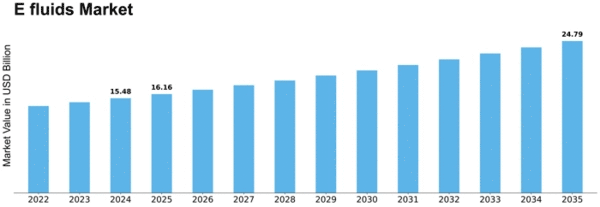

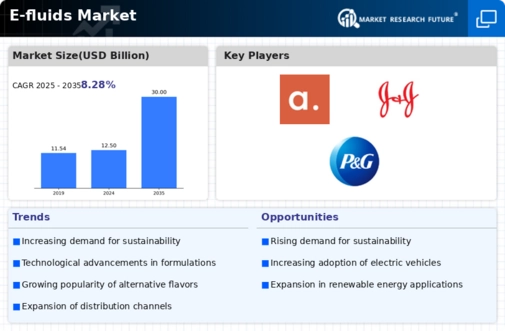

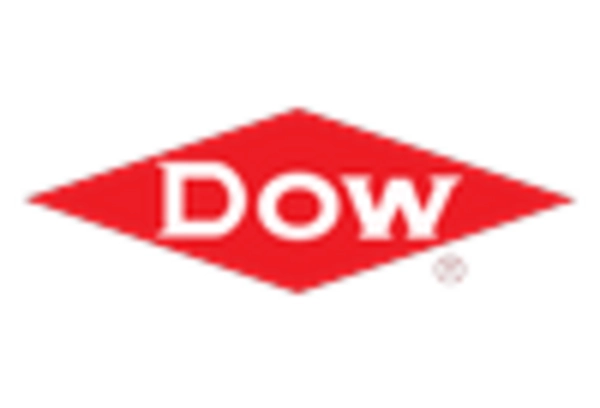

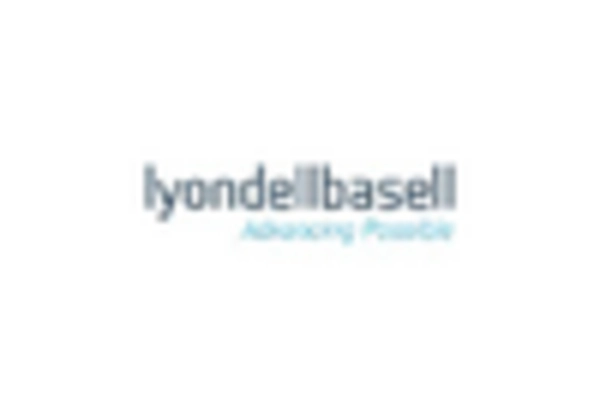
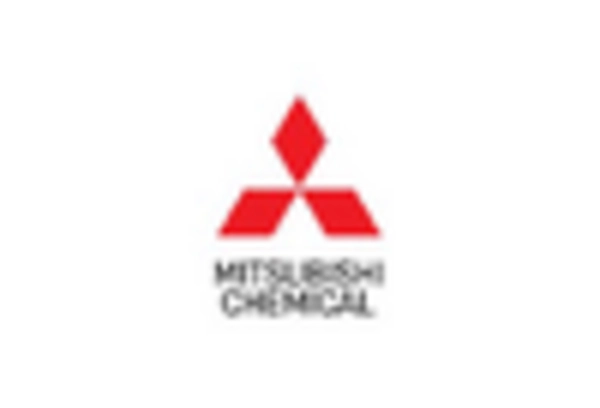










Leave a Comment